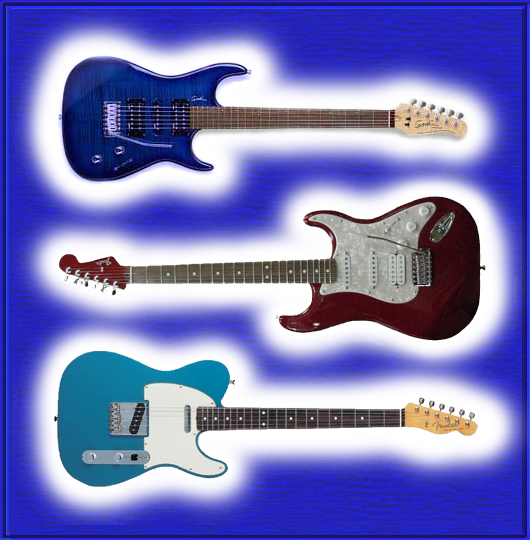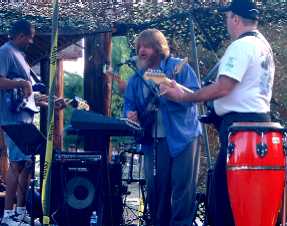Yes, I couldn't resist. I love blues. I also play some guitar.
And, for better or for worse, I sing a little as well.
(In the photo earlier up this page, I'm in the blue shirt)
So when a friend turned me on to "Cakewalk"
software, which allows multi-track recording on a PC, what else could I do?
I am now in the process of creating a set of blues recordings featuring:
- Myself, mostly playing my Godin Freeway Classic, Fender Fat Strat
and customized Fender Telecaster guitars (shown here), and
- MIDI instruments for all the stuff I don't have or cannot play
(e.g. drums, piano, bass, etc).
I have managed to get some musician friends to make guest performances here and there.
When it is all done, and assuming it doesn't suck, I hope to release a CD of my work.
I also hope to make a "Companion DVD" with the video of us all jamming away, complete with subtitles,
commentary, and extra non-video music tracks (of course, the video is edited to just show the good parts :-) ).
|
Click on a guitar to learn more about it

|





 Send Mark Jeghers a message
Send Mark Jeghers a message